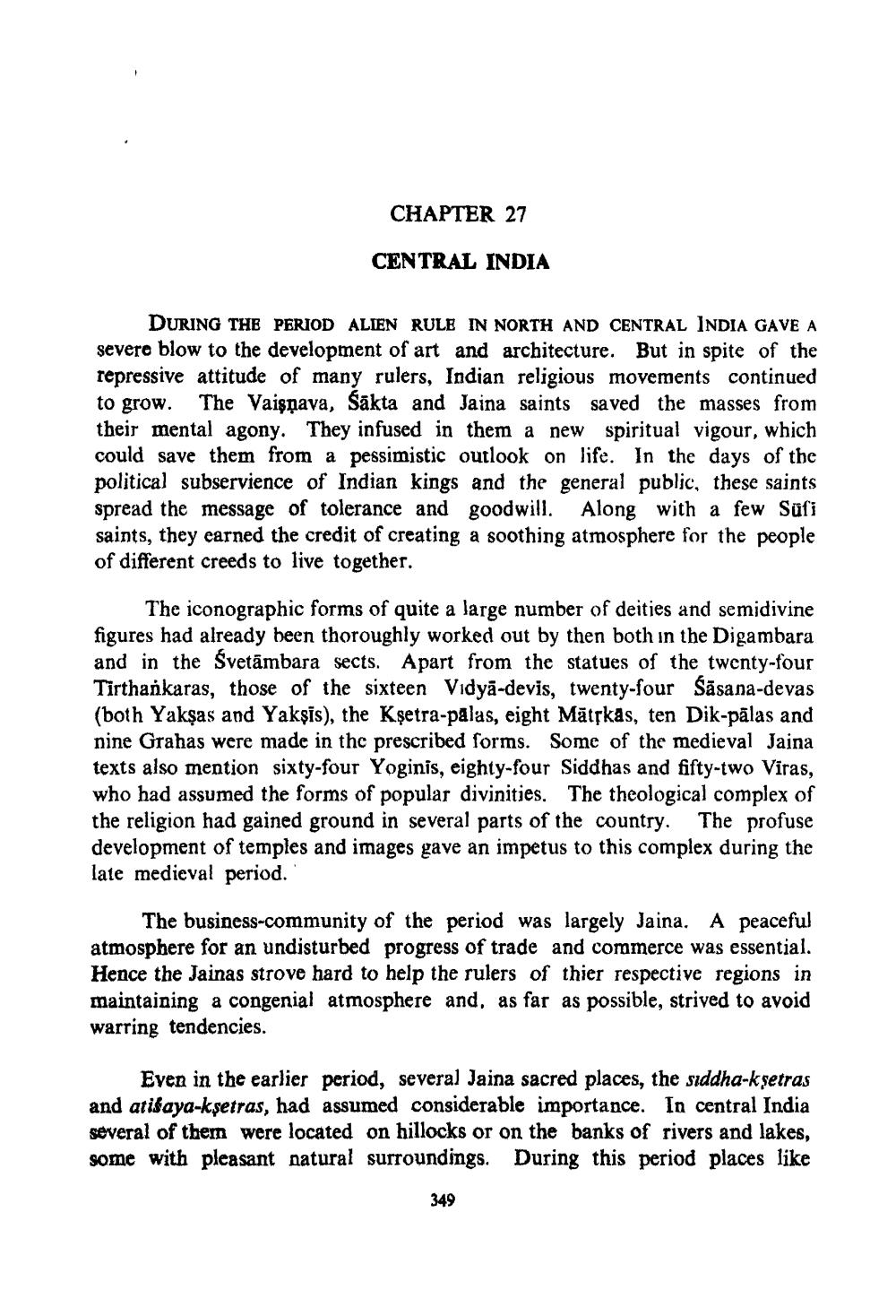________________
CHAPTER 27
CENTRAL INDIA
DURING THE PERIOD ALIEN RULE IN NORTH AND CENTRAL INDIA GAVE A severe blow to the development of art and architecture. But in spite of the repressive attitude of many rulers, Indian religious movements continued to grow. The Vaişpava, Sākta and Jaina saints saved the masses from their mental agony. They infused in them a new spiritual vigour, which could save them from a pessimistic outlook on life. In the days of the political subservience of Indian kings and the general public, these saints spread the message of tolerance and goodwill. Along with a few Süfi saints, they earned the credit of creating a soothing atmosphere for the people of different creeds to live together.
The iconographic forms of quite a large number of deities and semidivine figures had already been thoroughly worked out by then both in the Digambara and in the Svetāmbara sects. Apart from the statues of the twenty-four Tirthankaras, those of the sixteen Vidya-devis, twenty-four Sāsana-devas (both Yakşas and Yaksis), the Kşetra-palas, eight Mātskas, ten Dik-pālas and nine Grahas were made in the prescribed forms. Some of the medieval Jaina texts also mention sixty-four Yoginis, eighty-four Siddhas and fifty-two Viras, who had assumed the forms of popular divinities. The theological complex of the religion had gained ground in several parts of the country. The profuse development of temples and images gave an impetus to this complex during the late medieval period.
The business-community of the period was largely Jaina. A peaceful atmosphere for an undisturbed progress of trade and commerce was essential. Hence the Jainas strove hard to help the rulers of thier respective regions in maintaining a congenial atmosphere and, as far as possible, strived to avoid warring tendencies.
Even in the earlier period, several Jaina sacred places, the siddha-kşetras and atifaya-kşetras, had assumed considerable importance. In central India several of them were located on hillocks or on the banks of rivers and lakes, some with pleasant natural surroundings. During this period places like
349




